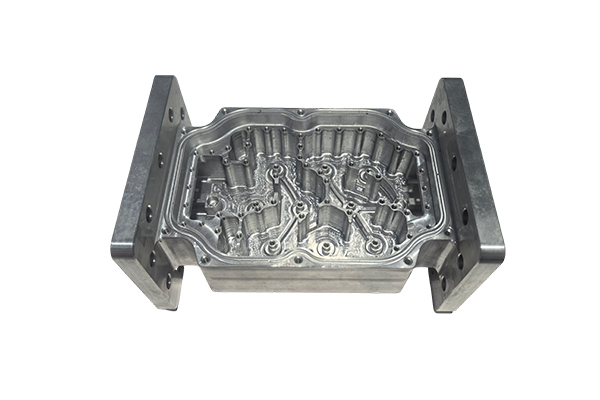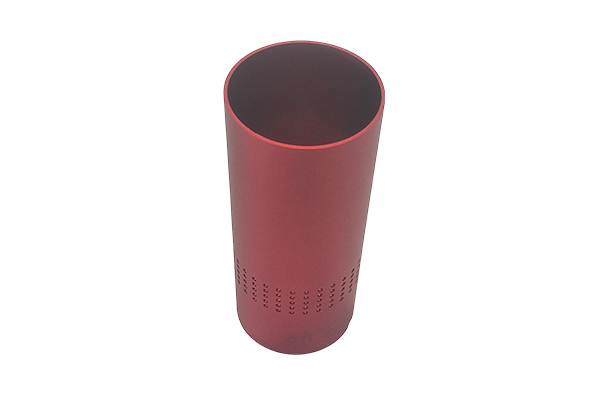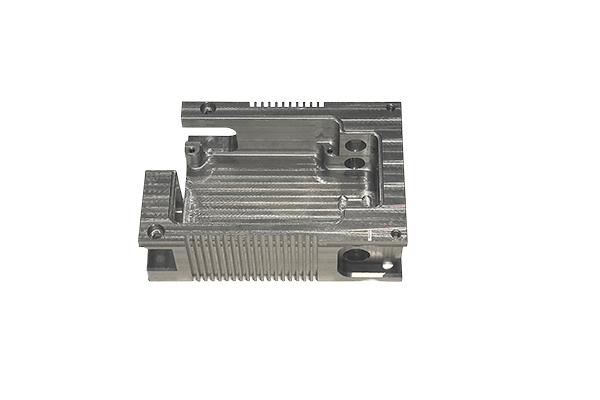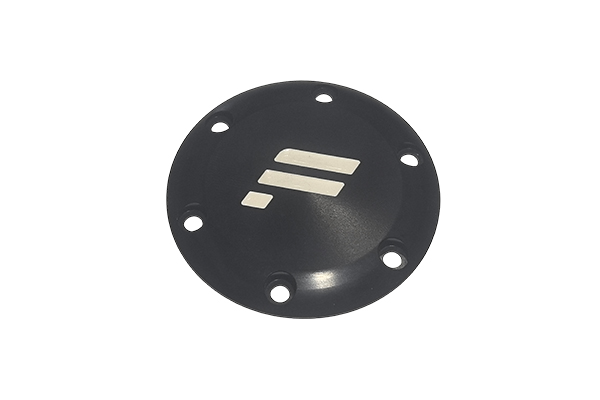What advanced manufacturing processes are used in shell processing to ensure high precision and consistency?
Release Time : 2025-07-10
In the process of outer shell processing of consumer electronic products, a series of advanced manufacturing processes are used to ensure high precision and consistency of products. These processes not only improve production efficiency, but also ensure the excellent performance of the final product in appearance, quality and performance. From material selection to finished product testing, every link is carefully designed and strictly controlled, reflecting the high level of modern manufacturing technology.
First of all, in the material selection stage, manufacturers usually choose high-performance materials such as aluminum alloy, stainless steel or engineering plastics. These materials have excellent mechanical properties and processing characteristics, and can meet the requirements of shell strength, weight and durability. For example, aluminum alloy has become an ideal choice for many high-end electronic product shells due to its good thermal conductivity, light weight and easy molding. Engineering plastics are widely used in products that require complex styling designs due to their excellent impact resistance and plasticity. By accurately selecting the materials that best suit specific application requirements, a solid foundation is laid for subsequent processing.
Entering the processing link, CNC machine tools (CNC) are one of the key equipment for achieving high-precision processing. CNC machines can automatically complete complex cutting, drilling and engraving operations according to preset programs, ensuring that the size and shape of each part meet the design standards. Compared with traditional manual operations, CNC machining significantly reduces human errors and improves the consistency and repeatability of production. In addition, modern CNC systems are equipped with real-time monitoring functions, which can automatically adjust parameters during the machining process to cope with changes in material properties, further improving machining accuracy.
In addition to CNC machining, injection molding is also a common process in the manufacture of consumer electronic product shells. Especially when dealing with plastic shells, injection molding can quickly and efficiently produce large quantities of consistent products. This process uses high temperature and high pressure to inject molten plastic into the mold cavity, and after cooling, it forms a shell of the desired shape. In order to ensure product quality, the design of the mold is crucial. A high-quality mold not only needs to have high precision, but also needs to consider demolding convenience and durability. By using precision molds, the injection molding process can produce shells with smooth surfaces and rich details, which greatly meets the market's requirements for aesthetics.
For metal shells, anodizing is a common surface treatment process, which not only enhances the corrosion resistance and wear resistance of the shell, but also gives it a variety of colors and textures. During the anodizing process, a hard oxide film is formed on the metal surface. This film not only has a protective effect, but can also be dyed according to customer needs to provide rich visual effects. In addition, technologies such as laser engraving and screen printing are also widely used in the decoration of the shell. By adding brand logos or personalized patterns on the surface, the product's recognition and market appeal are improved.
It is worth mentioning that with the continuous improvement of consumers' requirements for product quality, more and more companies have begun to pay attention to the application of automated production lines. The automated assembly line integrates multiple processing steps, such as cutting, polishing, and assembly, to achieve one-stop production from raw materials to finished products. This highly integrated production model not only greatly shortens the production cycle and reduces labor costs, but also effectively avoids quality problems caused by operational errors by reducing manual intervention in the intermediate links. At the same time, with the help of Internet of Things technology and big data analysis, companies can monitor various indicators on the production line in real time, discover and solve potential problems in a timely manner, and ensure the continuity and stability of production.
In terms of quality control, strict testing procedures run through the entire production process. From raw material inspection to semi-finished product sampling, to full inspection of finished products, each process has corresponding quality standards and testing methods. For example, after processing, all shells will be inspected by a three-dimensional measuring instrument to ensure that their geometric dimensions meet the design requirements; and for shells after surface treatment, their protective performance needs to be evaluated by means of salt spray test, wear resistance test, etc. By establishing a sound quality traceability mechanism, enterprises can locate the source of the problem at the first time and take effective improvement measures to continuously improve product quality.
Finally, the enhancement of environmental awareness has also prompted enterprises to pay more attention to sustainable development in the selection of production processes. For example, the use of cyanide-free electroplating technology instead of traditional cyanide-containing electroplating not only reduces the risk of environmental pollution, but also protects the health of employees. In addition, optimizing energy consumption and waste management are also key areas of concern for enterprises. By introducing energy-saving equipment and recycling systems, it can not only reduce resource waste, but also reduce production costs, achieving a win-win situation of economic and environmental benefits.
In summary, the shell processing of consumer electronic products has successfully achieved high precision and consistency through the use of a variety of advanced manufacturing processes including CNC processing, injection molding, and anodizing. At the same time, strict quality control systems and environmental protection measures also provide a solid guarantee for product quality. With the advancement of technology and changes in market demand, I believe that shell processing technology will continue to innovate and break through in the future, bringing consumers a better product experience.
First of all, in the material selection stage, manufacturers usually choose high-performance materials such as aluminum alloy, stainless steel or engineering plastics. These materials have excellent mechanical properties and processing characteristics, and can meet the requirements of shell strength, weight and durability. For example, aluminum alloy has become an ideal choice for many high-end electronic product shells due to its good thermal conductivity, light weight and easy molding. Engineering plastics are widely used in products that require complex styling designs due to their excellent impact resistance and plasticity. By accurately selecting the materials that best suit specific application requirements, a solid foundation is laid for subsequent processing.
Entering the processing link, CNC machine tools (CNC) are one of the key equipment for achieving high-precision processing. CNC machines can automatically complete complex cutting, drilling and engraving operations according to preset programs, ensuring that the size and shape of each part meet the design standards. Compared with traditional manual operations, CNC machining significantly reduces human errors and improves the consistency and repeatability of production. In addition, modern CNC systems are equipped with real-time monitoring functions, which can automatically adjust parameters during the machining process to cope with changes in material properties, further improving machining accuracy.
In addition to CNC machining, injection molding is also a common process in the manufacture of consumer electronic product shells. Especially when dealing with plastic shells, injection molding can quickly and efficiently produce large quantities of consistent products. This process uses high temperature and high pressure to inject molten plastic into the mold cavity, and after cooling, it forms a shell of the desired shape. In order to ensure product quality, the design of the mold is crucial. A high-quality mold not only needs to have high precision, but also needs to consider demolding convenience and durability. By using precision molds, the injection molding process can produce shells with smooth surfaces and rich details, which greatly meets the market's requirements for aesthetics.
For metal shells, anodizing is a common surface treatment process, which not only enhances the corrosion resistance and wear resistance of the shell, but also gives it a variety of colors and textures. During the anodizing process, a hard oxide film is formed on the metal surface. This film not only has a protective effect, but can also be dyed according to customer needs to provide rich visual effects. In addition, technologies such as laser engraving and screen printing are also widely used in the decoration of the shell. By adding brand logos or personalized patterns on the surface, the product's recognition and market appeal are improved.
It is worth mentioning that with the continuous improvement of consumers' requirements for product quality, more and more companies have begun to pay attention to the application of automated production lines. The automated assembly line integrates multiple processing steps, such as cutting, polishing, and assembly, to achieve one-stop production from raw materials to finished products. This highly integrated production model not only greatly shortens the production cycle and reduces labor costs, but also effectively avoids quality problems caused by operational errors by reducing manual intervention in the intermediate links. At the same time, with the help of Internet of Things technology and big data analysis, companies can monitor various indicators on the production line in real time, discover and solve potential problems in a timely manner, and ensure the continuity and stability of production.
In terms of quality control, strict testing procedures run through the entire production process. From raw material inspection to semi-finished product sampling, to full inspection of finished products, each process has corresponding quality standards and testing methods. For example, after processing, all shells will be inspected by a three-dimensional measuring instrument to ensure that their geometric dimensions meet the design requirements; and for shells after surface treatment, their protective performance needs to be evaluated by means of salt spray test, wear resistance test, etc. By establishing a sound quality traceability mechanism, enterprises can locate the source of the problem at the first time and take effective improvement measures to continuously improve product quality.
Finally, the enhancement of environmental awareness has also prompted enterprises to pay more attention to sustainable development in the selection of production processes. For example, the use of cyanide-free electroplating technology instead of traditional cyanide-containing electroplating not only reduces the risk of environmental pollution, but also protects the health of employees. In addition, optimizing energy consumption and waste management are also key areas of concern for enterprises. By introducing energy-saving equipment and recycling systems, it can not only reduce resource waste, but also reduce production costs, achieving a win-win situation of economic and environmental benefits.
In summary, the shell processing of consumer electronic products has successfully achieved high precision and consistency through the use of a variety of advanced manufacturing processes including CNC processing, injection molding, and anodizing. At the same time, strict quality control systems and environmental protection measures also provide a solid guarantee for product quality. With the advancement of technology and changes in market demand, I believe that shell processing technology will continue to innovate and break through in the future, bringing consumers a better product experience.







